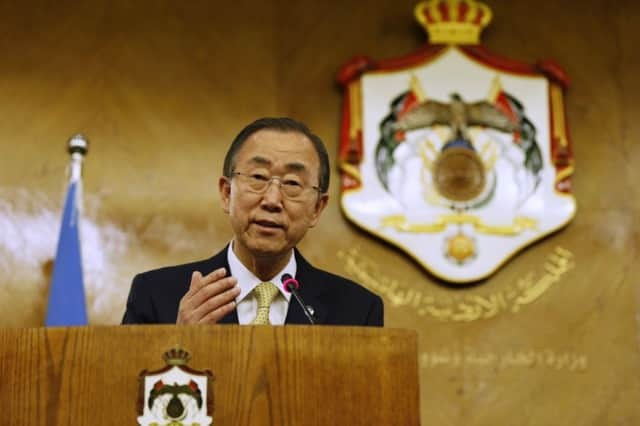Deep decarbonising can still happen


Take a deep breath. Take a deep breath and be aware of what you are breathing. For the first time in human history we are the first humans to breathe 400 parts per million of CO2 in the air.
This is how Christiana Figueres, executive secretary of the United Nations Framework Convention on Climate Change (UNFCCC) kicks off her conversation with an eager audience in the Universal Hall at the Findhorn Ecovillage.
Advertisement
Hide AdAdvertisement
Hide AdThe significance of her opening remarks is not lost on the audience – 400 parts per million (ppm) has long been regarded as a climate change tipping point.
In April, the World Meteorological Organisation (WMO) confirmed that carbon dioxide levels in the northern hemisphere hit the 400ppm mark for the first time in recorded history. Ominously, WMO general secretary Michel Jarraud warned: “Time is running out.”
Ms Figueres is in Findhorn with a group of decision makers and experts to explore the advances that can be made in climate finance ahead of the forthcoming Climate Summit convened by UN Secretary-General Ban Ki-moon in September, and in the climate negotiations that are scheduled to take place in Paris in 2015.
The Paris conference is seen as a once-in-a-generation opportunity for transformational change. The goal is a binding, fair, global climate agreement designed to limit global warming to 2ºC.
Yet, beyond global policy makers and advocacy groups, most citizens are not fully aware of the contours and importance of this new sustainable development agenda.
Ms Figueres believes that climate change cannot be solved unless individuals, communities, cities, regions and nations align together. “The policies, the incentives and finance flows all need to be joined so that they are moving in the same direction, otherwise we are not going to manifest the transformation needed in timely fashion,” she says.
This alignment has one sole objective: a drastic reduction of carbon emissions between now and 2050, en route to a zero-net emission economy in the second half of the century that can meet the challenge of remaining below 2°C.
The UN Secretary-General recently warned: “We know that we are not on track, and time is not on our side.”
Advertisement
Hide AdAdvertisement
Hide AdYet, deep decarbonisation can still be accomplished, according to Professor Jeffrey Sachs in the recent report Pathways to Deep Decarbonization, compiled by the Sustainable Development Solutions Network.
The report outlines steps countries can take to meet an internationally agreed target of limiting the increase in global mean surface temperature to less than 2°C through three working streams: energy efficiency, low-carbon electricity and fuel switching.
“I expect countries to adopt different combinations according to their needs, resources and priorities,” said the UN Secretary-General.
He added: “But all countries need to embark on the same journey.”
Mr Ban stressed that deep decarbonisation is feasible, but it requires a global commitment to advancing key low-carbon energy technologies.
I asked Ms Figueres how she sees the sustainable development goals (SDGs) and climate agendas converging, and she replied: “The SDGs are developing a vision for what kind of society we want to build over the next 50 years.
“It is an important aspirational, philosophical, sociological conversation that inspires us all to think as big as we possibly can. You cannot think about what kind of society you want to build over the next 50 years unless you say how are you going to address climate.”
The vision that is emerging is inviting our generation to rethink how we live our lives to fit a finite planet rather than attempting to reshape the planet to fit our infinite wants. In the coming months we shall see whether the international community is able to rise to the challenge. Will the world’s largest economies wholeheartedly pledge to take action to limit global warming to within 2°C? Can world leaders overcome self-interest and agree a vision of a sustainable decarbonised world where no-one is left behind?
Advertisement
Hide AdAdvertisement
Hide AdClimate change is no respecter of national boundaries. As Ms Figueres tells us: “The child that dies of starvation in Sub-Saharan Africa is my child, is your child. We cannot separate. This is the lesson of climate change. We, as a race, are being called upon to understand compassion, to understand solidarity, and to understand that what happens in the Sub-Sahara happens here.
“I firmly believe that climate change as a physical reality has been given to us as an important call for us as the human race to stand up for our highest purpose”.
• May East is CEO of CIFAL Scotland, a United Nations Institute for Training and Research sustainability centre based in Edinburgh www.cifalscotland.org
SEE ALSO